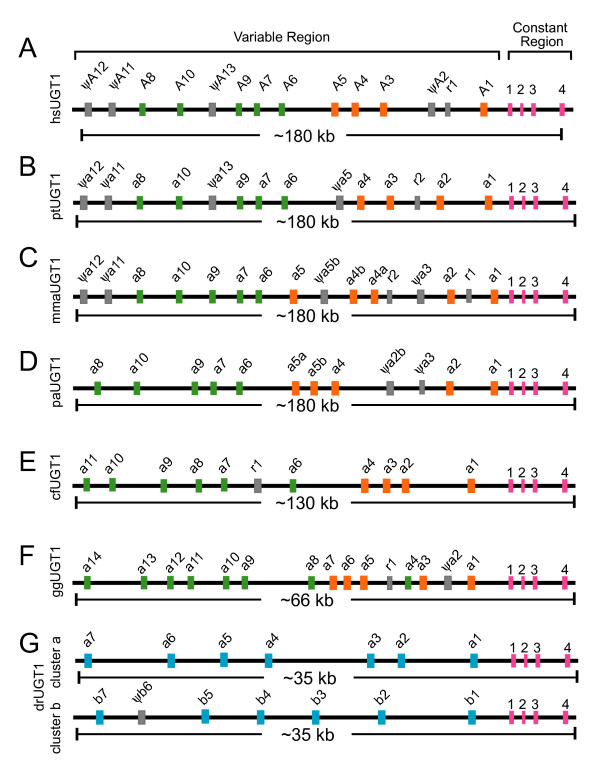Figure 1.

Comparison of the (A) human (Homo sapiens [hs]), (B) chimpanzee (Pan troglodydes [pt]), (C) rhesus monkey (Macaca mulatta [mma]), (D) baboon (Papio anubis [pa]), (E) dog (Canis familiaris [cf]), (F) chicken (Gallus gallus [gg]), and (G) zebrafish (Danio rerio [dr]) Ugt1 clusters. Each cluster contains multiple variable first exons arrayed in tandem and a common set of 4 downstream constant exons. These exons are indicated by vertical colored bars: (green) phenol-group variable exons; (orange) bilirubin-group variable exons; (blue) zebrafish variable exons; (gray) pseudogene (ψ) or relic (r); and (red) constant exons. The approximate length of each cluster is shown below the corresponding panels.
